Limpkin Invasion!

It was Saturday late afternoon in September before dinnertime, and Chris decided he needed to run to Dollar General to get a Monster energy drink to cure his lingering headache. Off he went and minutes later I get a phone call from him telling me about a Bird Alert. A Bird Alert is usually when we see a rare or uncommon bird in the area, something to get worked up about! We’re not birders per se, though my Chris is much more in tune with birds than I am. I gravitate towards the more gregarious species and generally ignore the little brown jobbers. Yes, I know this makes me a terrible naturalist but there are so many birders in this world compared to the number of plant nerds, and well, I tend to go where there are less people and focus on things that stay put or move slowly.

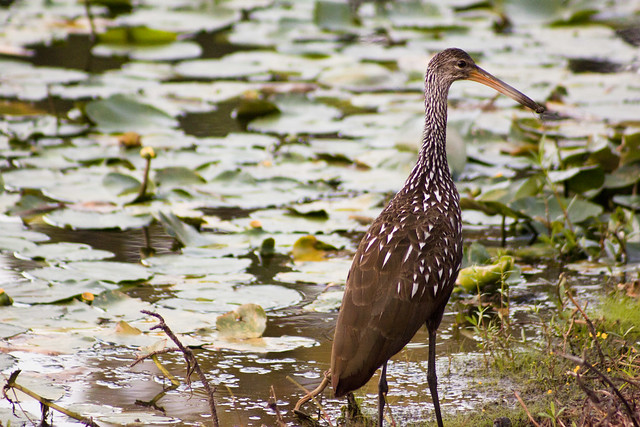
This special Bird Alert was for a limpkin (Aramus guarauna), a bird that I had never seen in Texas. It was, however, a bird I was familiar with from my time living in Florida. There, the birds eat various native mussels and snails, and in recent decades have feasted on the invasive channeled and island apple snails and other exotic snail species that have found their way to Florida to breed, and escaping into the wild.
I posted my phone photos to my Instagram stories later on the next Monday and was quite surprised to find out from Texas naturalist Matt Buckingham that there’s a bit of a limpkin invasion happening right now. Now, before I had posted to Instagram I uploaded my find onto iNaturalist, which is a platform I use with regularity and will tell any budding naturalist to start using in conjunction with field guides and other online resources. I saw on iNaturalist quite a lot of observations huddled around certain regions in Texas, plus scattered sightings throughout a wide swath of the eastern US. But, like I said, I’m not a birder so I had not dug into the implications of these sightings.
Well, I took Matt’s information and dug in and was astounded by what I found.
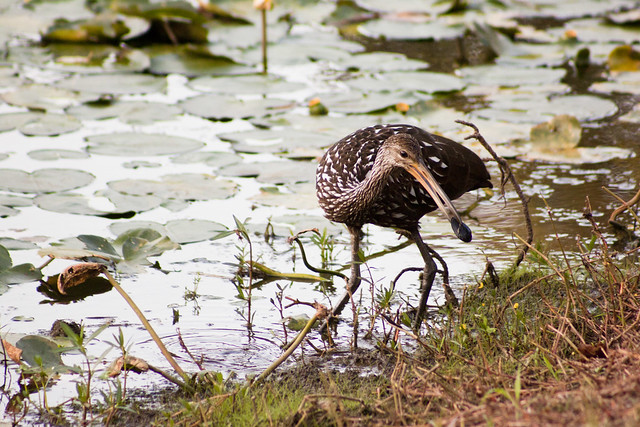
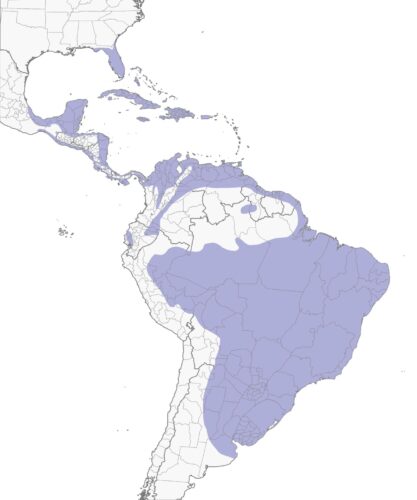
First, you can see the historic limpkin range map from Cornell.
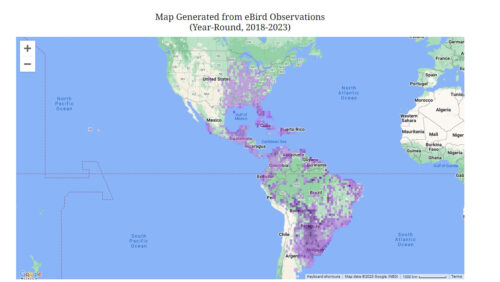
And now you can see the eBird observations from 2018-2023.
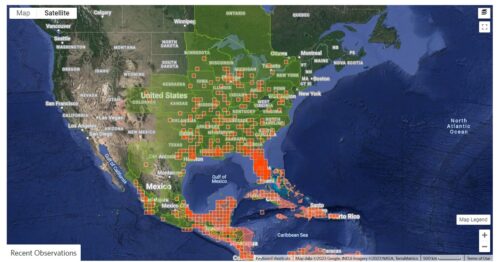
And here are all limpkin observations on iNat. If you start filtering by year on iNat you can quickly see the rapid expansion from 2021-2023, with only a handful of sightings in the Houston area in 2021 compared to 2020 when there are none in Texas, and 2023 when there are sightings all over Houston, San Antonio, Austin, DFW, scattered east Texas sightings, and a couple near South Padre and McAllen. Pretty impressive range extension within a two year time span!
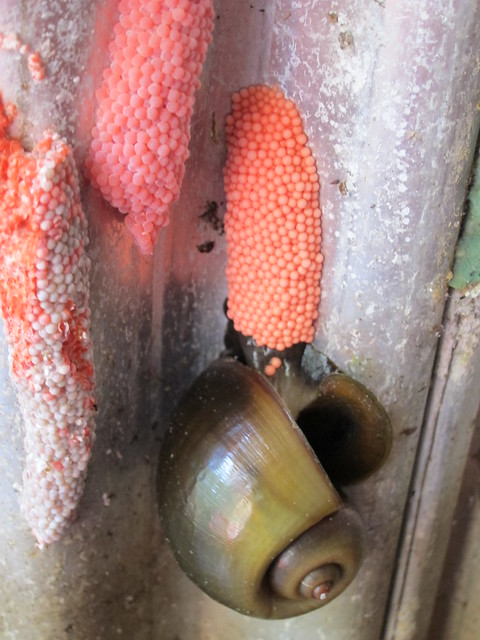
Island Apple Snail (Pomacea maculata) Loxahatchee River, Florida
I’m not going to dive too deep into apple snail ecologies here, but suffice to say, there are two species currently in Texas waterways that are becoming a problem: the island apple snail (Pomacea maculata) and the channeled apple snail (Pomacea canaliculata). They’ve primarily been found in Houston, though the San Antonio River on the Riverwalk has a substantial population and there are scattered sightings in Austin, a few near Brownsville, and one near Dallas. By far the island apple snail is the most abundant in Texas.
I recall that I had a passing thought when I first saw those eggs, that we needed some limpkins to fly into San Antonio and take care of the adult snails. And here we are a few years later and that whim of a thought seems to have manifested itself.

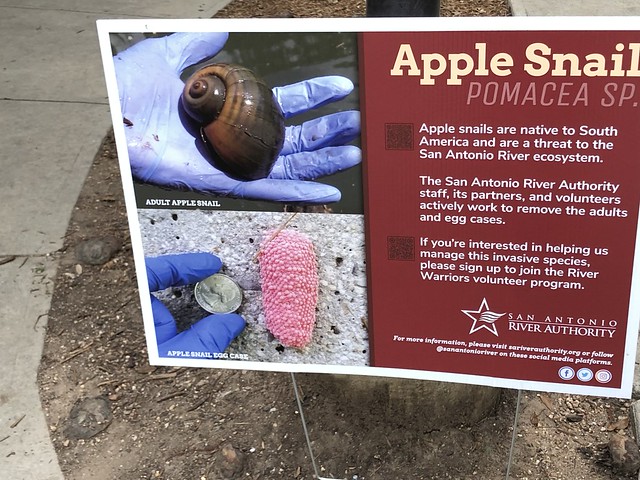
I know a few people who have seen apple snails in Houston but my first encounter in Texas was along the San Antonio Riverwalk. This sign was up near The Pearl but I suspect the snails are already established up and down that river in the city.

Back to my limpkin friend, I was able to inch closer to get better photos with my camera. I approached cautiously so as not to flush it further down the shore, and after a few “I saw it” photos, I slowly stepped a foot or two closer when it was distracted with opening mussels. My favorite thing about this interaction was being able to hear the limpkin opening the mussels with its beak! *Whack!*
Will I ever see another limpkin on this pond? I don’t know but I’ll keep scanning the ponds to see if they ever return.
Further Reading:
The Limpkin Explosion via The Cottonwood Post blog
Invasion of the Limpkin via Oklahoma Department of Wildlife Conservation
PS: If you subscribe to my Substack you might have already read this there but I wanted to share it here, too!


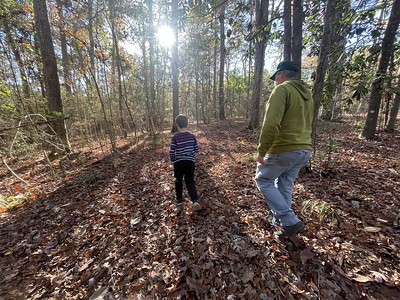
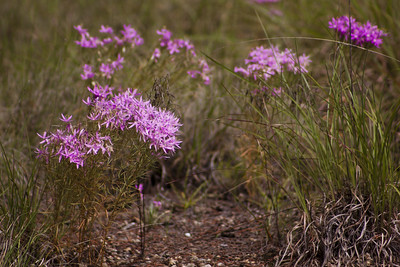
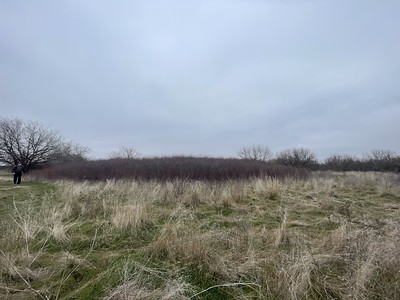
One Comment
Judy
Very cool. Modern technology and citizens really help track birds.